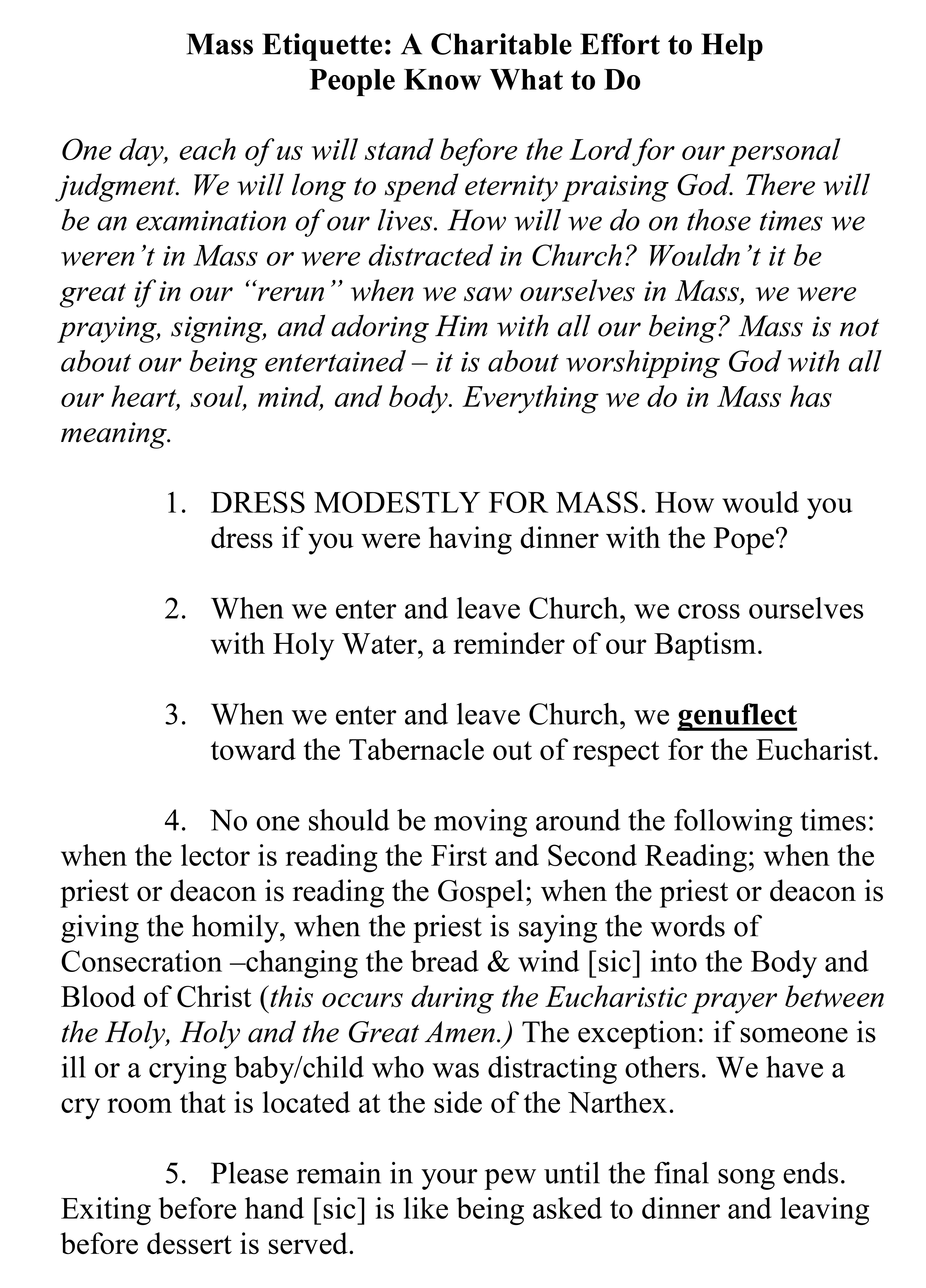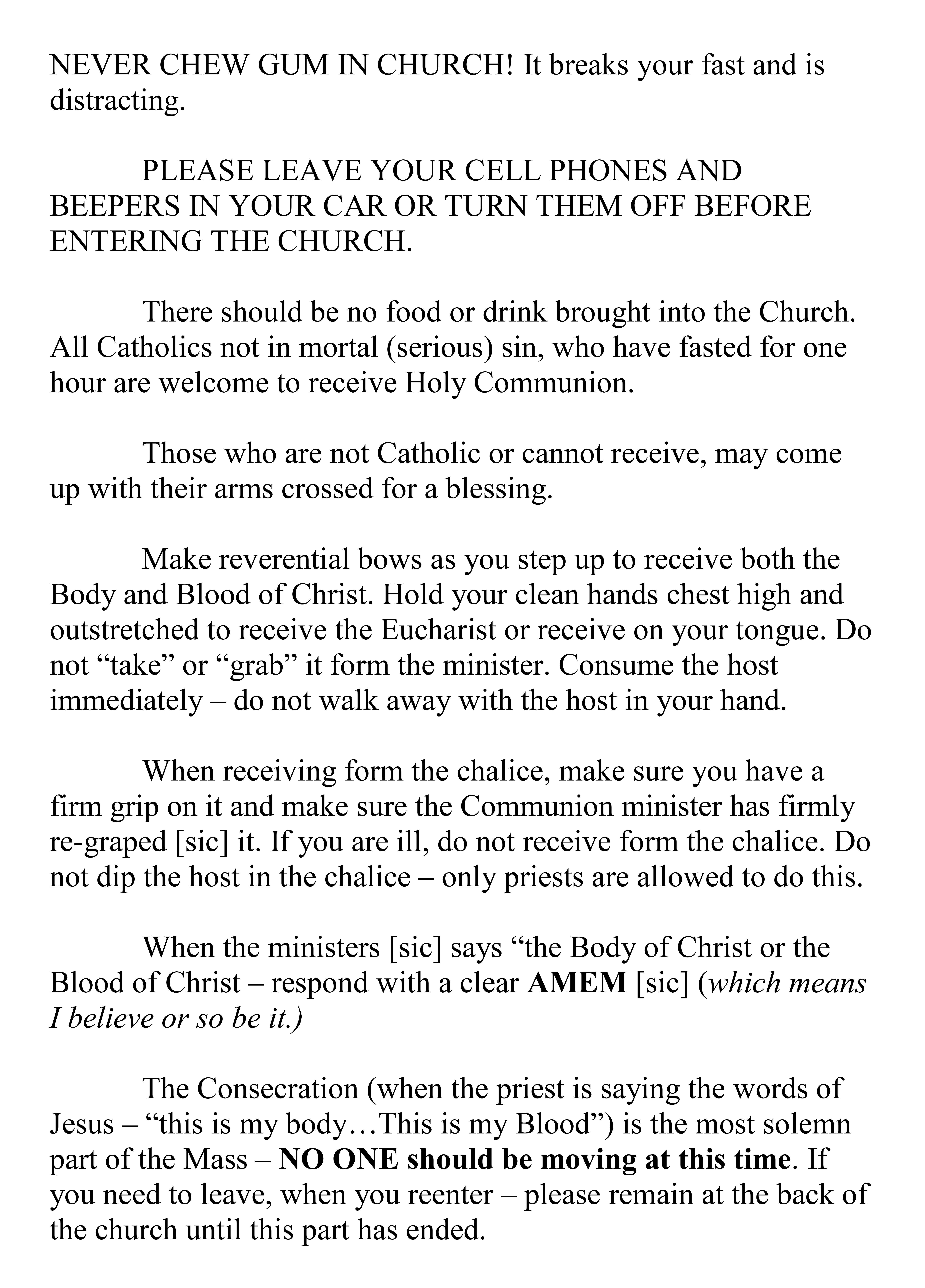Another reader writes in:
The attached photos came from a friend who was visiting a church for Easter this past weekend. They’re “Mass Etiquette” cards in the pews, complete with typos (apparently “bread and wind” are changed into Body and Blood, while those receiving should respond with a clear “AMEM”).
She found them somewhat offensive, but her non-Catholic spouse learned a few things from them.
Is this a viable pastoral solution? Is there a better, “more charitable” way to do this? In this post-Liturgiam authenticam era, with Mass response cards and Mass setting cards and missalettes and hymnals, are we shoving too much stuff in the pews?
The images were a bit blurry so I have reproduced them below.


I agree wholeheartedly with our reader that there is “too much stuff in the pews.” I am hesitant about the usage of missalettes and worship aids which provide more than the basics. They can become barriers to active participation by tying the faithful down to the text of the Mass instead of the lived liturgy being celebrated.
This etiquette card points to a larger problem: a lack of catechesis. An etiquette card does not replace the need for catechesis. If we have to explain to people in the pews how to worship at Mass through a card, then we have not done our jobs as liturgists, ministers, and pastors.
Small notes here and there in the worship aid which help remind the faithful and guests about the “proper way” to worship at Mass are appropriate; however, a whole etiquette card is ill-advised.
I am curious to hear your thoughts. Please comment below.

Leave a Reply